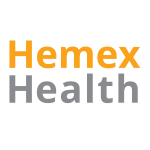Rapid, Low-Cost, Point-of Care Diagnostic Could Improve Patient Care and Save Lives in Hard to Test Areas
MUMBAI, India & PORTLAND, Ore.–(BUSINESS WIRE)–Research published today in the journal Frontiers in Medicine found that Gazelle�, a diagnostic platform from Hemex Health, has 99% accuracy in diagnosing sickle cell disease (SCD). The research team, from India�s National Institute of Research in Tribal Health (NIRTH), have been hoping to find a low cost, highly accurate, point-of-care rapid detection test for SCD because current testing requires sending samples to a lab, resulting in delays, inability to communicate with patients, and in some cases corruption of the studies due to heat or rough conditions.
�At least 15% of all newborns with sickle cell disease are from India, and it is estimated that 20% of Indian children with sickle cell disease die from related illnesses before reaching their second birthday,� said Dr. Shanmugam Rajasubramaniam, Head, Division of Genetic Disorders, ICMR-National Institute of Research in Tribal Health. �Early diagnosis could start these children on life-saving therapies, but only a few public health facilities for diagnosis of sickle cell disease and patient care exist. A device like Gazelle that can be taken to remote areas could expand patient care significantly and save many lives.�
In the study, the NIRTH team tested Gazelle to compare its accuracy against the standard laboratory tests, HPLC and hemoglobin electrophoresis. The results showed Gazelle performing with similar accuracy, but with more speed and ease.
The study included 960 subjects from the tribal states of Chhattisgarh and Madhya Pradesh, who ranged in age from 6 months to 65 years. Gazelle identified all patients with disease (HbSS) with 100% accuracy. Gazelle demonstrated 100% sensitivity when comparing sickle cell disease versus sickle cell trait and sickle cell disease versus normal. Gazelle exhibited high sensitivity and specificity for detection of each relevant hemoglobin phenotype (normal, carrier, and disease states). Overall, Gazelle yielded a high accuracy (99.0%) compared to the reference standard tests, hemoglobin electrophoresis and HPLC.
�Hemex recognizes the critical need for at-risk populations to have access to affordable, accurate testing,� said Patti White, Co-founder and CEO, Hemex Health. �Clinicians in remote low resource locations told us what was needed, and we listened. Our sickle cell test uses a miniaturized version of electrophoresis � a technology widely known and trusted by clinicians � packaged in a portable, battery-powered device. We made it fast and easy-to-use with minimal training, and rugged enough for the hot and humid conditions that one often finds in the field.�
Researchers noted many of Gazelle�s ease-of-use features that would be valuable in field settings, including error detection software that senses problems with sample preparation and the automated interpretation of each sample. The short test time (about 12 minutes from sample to result) allows a report to be generated during the visit, ensuring that treatment and education can begin immediately. Because the device stores patient results locally or can transmit them to the cloud or printer, clinicians can easily track the patient�s history.
Please click to continue reading this release.
Contacts
David Sheon
[email protected]
202 422-6999







